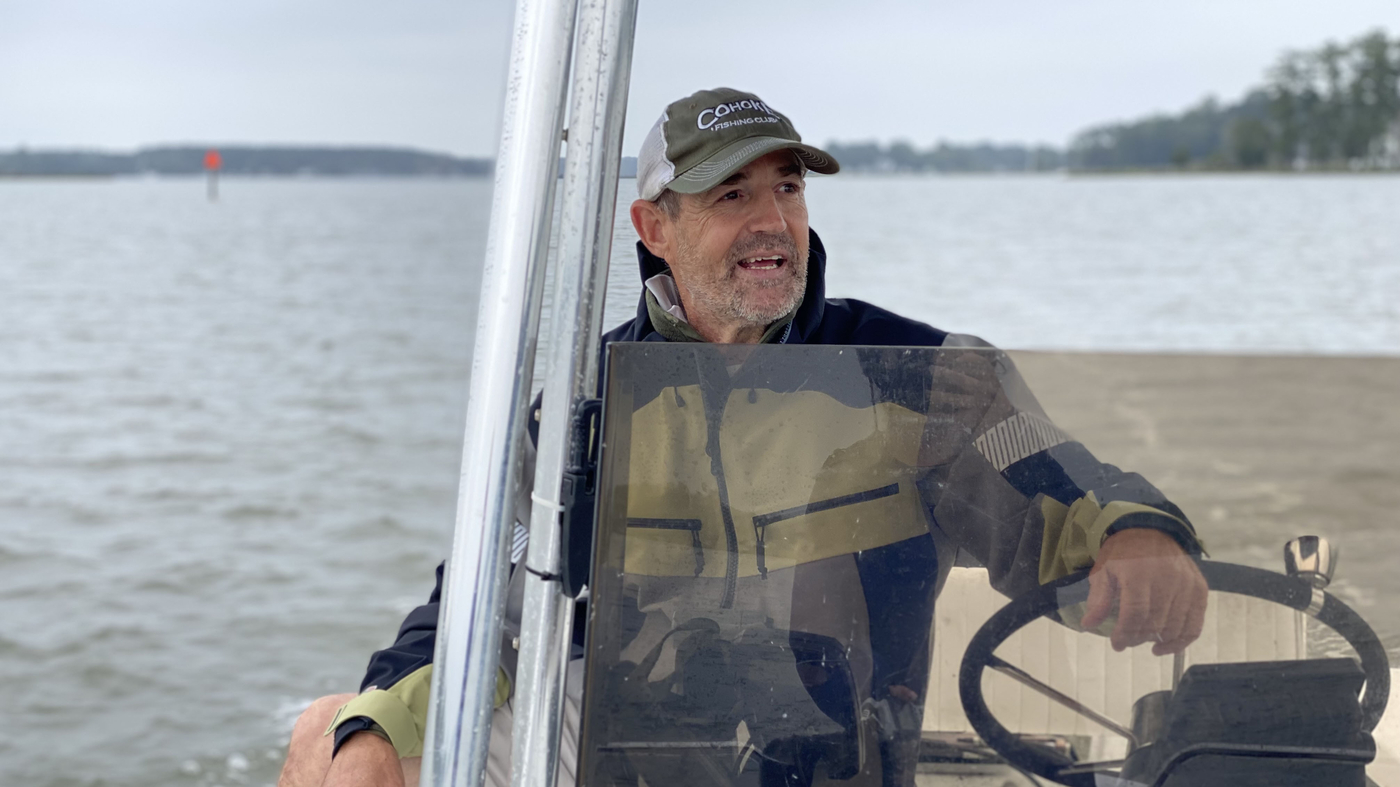Menhaden in the bay: Where are we going? What do we need to know, and what are wen’t? Why did we ask for a bay menhaden moratorium?
Even without the new study, a coalition of sport fishers and conservation groups continues to push for a menhaden moratorium in the bay, with a lawsuit currently making its way through the courts, and an active petition filed with state regulators.
The bill was proposed by a Republican, who said that there were so many people involved in discussions over the course of a year. It’s important to the health of the Bay and the economy of Virginia, and that’s why it’s so disappointing.
A plan for a nearly $3 million study on menhaden population in the bay, as well as other impacts of the commercial fishery and menhaden policy was worked on by Latour’s team with the help of Omega.
Omega does fish surveys, so it’s likely to use the same spotter planes to collect data on the bay menhaden population. Latour said scientists also don’t know that much about the fish’s life cycle, which spans the East Coast, making it further difficult to study just the bay.
“I don’t fault people for thinking about that,” he said. It’s a difficult thing to determine with sufficient evidence. The things you need to know, we don’t know.”
The Atlantic Menhaden Fishery: Why the Bay isn’t Closer to the West Coast, and What Happens When The Industrial Net Teares Happened
Critics say the Atlantic menhaden population numbers along the East Coast could obscure the decline in the bay.
“Quite frankly, if this were any other species, I think we’d all be celebrating,” said Rob Latour, a professor at William & Mary’s Virginia Institute of Marine Science, which researches menhaden for state regulators.
New catch limits imposed in the recent decades helped the Atlantic menhaden population return to normal after it crashed during the 20th century.
Omega says that the Atlantic menhaden population is not overfished, because the industry is already tightly regulated.
Commissioners reached a deal with Omega to harvest less when there is more beachfront activity in the summer, but they did not codify any new restrictions.
The renewed public attention led to some proposed new regulations on the industry. A four-hour public hearing took place in late 2022, with vociferous pleas from both sides.
The fishery used to be controlled directly by state lawmakers, making regulatory decisions highly political. The Virginia Marine Resources Commission, which is made up of appointees by the governor, took it over in 2020.
Some local sport fishermen have taken to filmingOmega’s operations on the water in order to make a statement about how wasteful the industry is.
Some of the increased attention came after a series of industrial net tears in the summers of 2021 and 2022 spilled tens of thousands of dead menhaden onto Virginia beaches, appalling residents and tourists with the sight and smell.
“I can show you a New York Times article from the 1890s talking about sport fishermen and the menhaden fishery battling,” said Landry, the Omega spokesperson. “But I would say probably the last four or five years we’ve seen a far greater increase in hostility.”
Omega uses a method called purse seine fishing to harvest fish. The company sends planes to scout for big schools of menhaden. The fishing vessels surround the school with nets that cinch on the bottom to prevent fish from escaping.
Omega doesn’t just fish in the bay, but also in many other places around the world. About two-thirds of its harvest comes from the Atlantic Ocean, but it’s all processed in Reedville.
On a breezy afternoon, Chris Dollar launched his boat into the Ware River in Gloucester, Virginia. Pulling away from the dock, he pointed to small ripples in the water: jumping menhaden, a small, silver fish that has found itself at the center of one of the most heated and longest-running debates in the state.
Dollar has spent his life on the Chesapeake Bay. He owns and operates a charter fishing business that gives sport fishers the equipment and knowledge to catch striped bass and rockfish.
The fish are also valuable to a commercial fishery dating back more than a century, which harvests hundreds of millions each year to produce fishmeal and fish oil for products like pet food and omega-3 supplements. Virginia is the last East Coast state that allows menhaden reduction fishing in state waters.
One of them is a dollar. He said he didn’t see the same amount of fish in the bay as he used to. He stated that the schools of menhaden used to be greater than a football field and now are more like a tennis court. You can see those smaller numbers.
“You’ve got to wonder if an industrial fishery of this size has a place anymore in the 21st century, in a narrow Chesapeake Bay that’s already facing so many other problems,” Dollar said.
Omega is not related to the science, according to Ben Landry. “There’s no amount of factual evidence that can sway a person who, in their heart of hearts, believes menhaden is overfished.”
“What we need to contemplate as a society is the balance,” said Bryan Watts, director of William & Mary’s Center for Conservation Biology. How much do we care about the functioning of the ecosystems and the long term health of it, and how much dowe care about industry?
First glimpses of the fish as a first-principles farm-raised salmon-scalar facility in the Gulf of Samoa
He pointed to a bin filled with fish that shimmered in the morning sun from a platform overlooking the water.
The fish are washed, squeezed and pressed into oil and meal at the plant where they were used to feed farm-raised salmon and shrimp.
